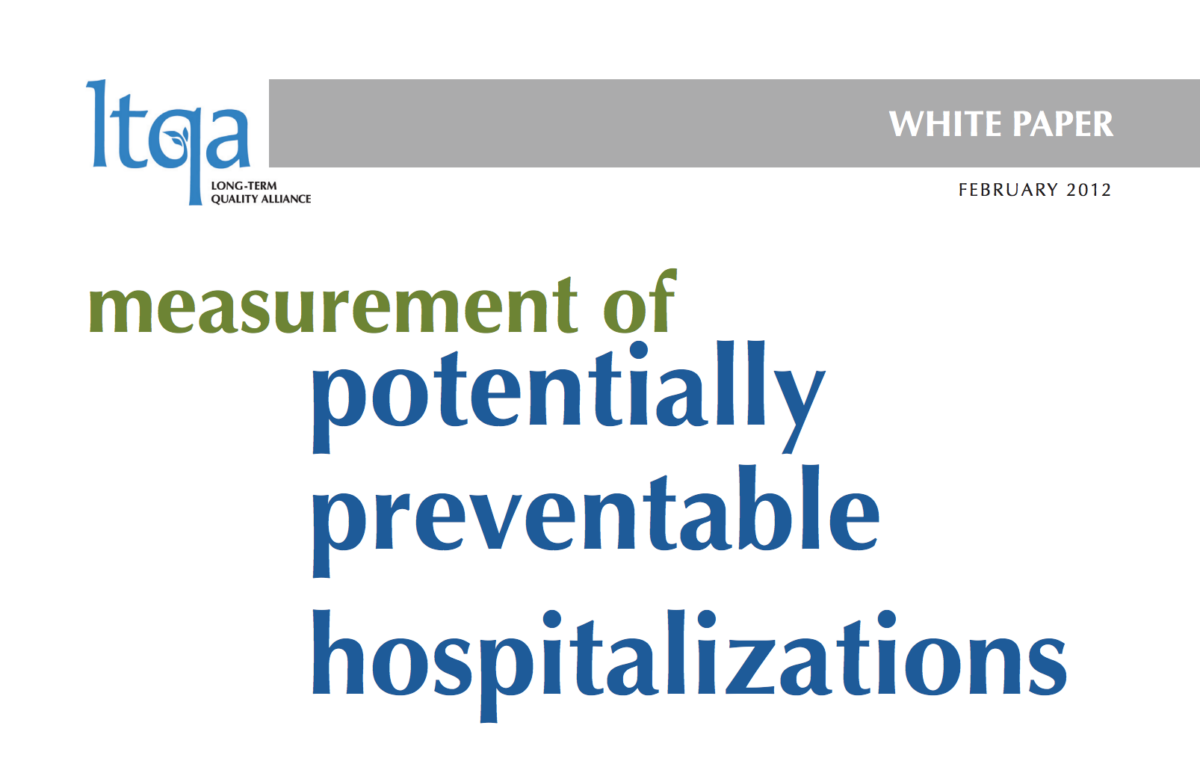The Long-Term Quality Alliance (LTQA) today released a white paper that reveals that although the decision to go to the hospital is often made in long-term services and supports settings, there are no available validated measures to help long-term care organizations determine what is a preventable hospitalization. The paper makes recommendations for how Medicare, Medicaid, private payers and the long-term services and supports community can generate information, training and support to reduce preventable hospitalizations. Click Here to download the paper.
Frequent hospitalizations and complications that develop during hospital stays can have serious, negative consequences for chronically ill adults and older people who receive long-term services and supports at home or in assisted living or a nursing home. Initiatives created by the Affordable Care Act will create strong pressures, including decreased payment to hospitals, to reduce potentially preventable hospitalizations. These initiatives could greatly benefit chronically ill adults and older people by avoiding difficult care transitions and the negative consequences of potentially preventable hospital stays.
“Our literature search on potentially preventable hospitalizations to identify quality measures that would work for frail and chronically ill adults and older people found no appropriate measures that adequately distinguish which hospitalizations are potentially preventable for the population served by long-term services and supports organizations,” said Katie Maslow, scholar-in-residence at the Institute of Medicine and a co-author of the white paper.
“If we are going to link financial incentives to improved care for the LTQA population, we need to know how to measure quality,” said Joe Ouslander, MD, professor and senior associate dean for geriatric programs, Charles E. Schmidt College of Medicine, Florida Atlantic University, the other co-author. “We also need broad implementation of interventions that can improve the measures.”
The paper includes seven recommendations for the LTQA to pursue. These include:
• Defining preventable hospitalizations in general instead of by setting.
• Defining as precisely as possible the population receiving long-term services and supports.
• Beginning a process to develop appropriate measures or measure-based procedures to identify potentially preventable hospitalizations in the LTQA population.
• Advocating for studies of measures.
• Advocating with CMS for rigorous monitoring of programs designed to reduce preventable hospitalizations.
• Expanding education for clinicians who trigger hospitalizations.
• Advocating for expanded implementation of existing tools for reducing preventable hospitalizations.
“This report provides an excellent blueprint for the LTQA to improve transitions and tackle this problem that creates diminished outcomes and increases costs,” said Carol Raphael, chair of the Long-Term Quality Alliance and past CEO of the Visiting Nurse Service of New York. “We have much work to do, but the solutions are available and we are passionate about actualizing them.”

